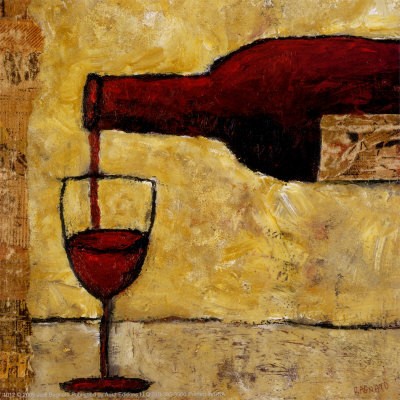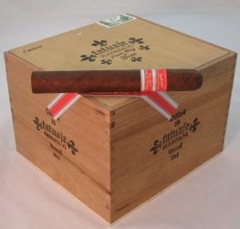
Submitted by ryan on Fri, 11/14/2008.
With the advent of such vine-centric movies as Sideways and Bottle Shock, America is buzzing. But not on coffee. Exit the Era of Starbucks, enter the Age of the Vine. Wine, that is. Man has been drinking wine for about 7000 years, but only recently has it come into its own in the ‘New World.’ But the sphere of wine is so extensive, so esoteric, that most of us don’t know where to begin, and walk the vine less traveled under the sneering gaze of wine snobs, embarrassed of our lack of knowledge. But the truth is, ignorance is only a place to begin. You don’t need to be an expert to enjoy wine. But you do need an open mind. Here’s the skinny on selecting and enjoying the full-bodied fruit of the vine.

The first myth we need to dispel is that you need to spend a lot of money to enjoy wine. Wrong! More expensive does not always mean a better wine. The price of wine, like anything on the market, is controlled by demand. If a particular wine is very popular, sellers will feel justified in charging more for it. You may discover some genuinely delicious, unknown wines, which are not as expensive. While it’s best not to get taken in by price tags, a good question to ask yourself is, ‘How much do I want to spend?’ And something that might determine your price range is the occasion. Are you just looking for something nice to drink with a meal, or is this for special anniversary? The price range on wines is vast: anything from $2 or $3 to literally thousands of dollars. There’s nothing wrong with not wanting to spend heaps of cash on wine. In fact, a quick perusal of your local bookstore will probably turn up several guides on ‘great wines for less,’ or something along those lines.
But don’t get too attached to those buyers manuals and points systems. They are a good tool to use in the beginning, but like they say on Pirates of the Caribbean, they’re more like guidelines than strict rules. Trust your instincts! As you become more savvy and experienced, you’ll learn what you want in a wine. Remember, not everyone is going to love the same thing, and that includes the so-called experts. A good example of what I’m talking about, happened at a wine-tasting given by my local shop. I saw a gentleman thoroughly enjoying one of the samples. But when he consulted his guide book, he decided not to buy it.
That isn’t to say a little knowledge can’t help inform what your taste buds are telling you. Think back to when you were small. You could feel the entire range of human emotions, but you didn’t know the right words to express them. With wine too, there will be a bit of confusion until you learn the basics. Let’s start with the wine itself.

Just browsing through a wine shop, right away you’ll notice a big difference: color. Wine is either Red or White. [Rose or Blush, although pink in color and technically made from red grapes, should be treated is as a white wine.] White wine is more Acidic, and tends to be lighter, brighter, and dryer in taste. Also more refreshing, as it is drunk chilled (but not ice cold!). Whereas Red wine usually has a more complicated flavor, mostly because the skins are involved during the fermentation process, giving it a Tannic taste. Tannin is the stuff in the skins (and sometimes the barrels) that give you that drying-out feeling in your mouth when you take a sip of red wine. If you’re having trouble distinguishing between Tannic and Acidic, try paying attention to how your mouth feels after you’ve swallowed the wine. Both Acid and Tannin will leave your mouth dry, but Acid will make your mouth salivate as a response (like when you bite a wedge of lime), whereas Tannin will stay dry.
There are about as many ways to group wine as there are ways to organize your music collection. My favorite belongs to wine guru Heidi Yorkshire:
‘There are three types of wine in the world: 1) I like it, 2) I don’t like it, and 3) I’ll drink it if someone else is paying for it.’
That’s as simple as it gets. But if you want to get a little more technical, here are two basic ways to look at wine: The Grape: the species or blend of grapes; or The Place: where the grapes grow.
Old Country (mostly European) wine is named after the region where the grapes are grown, like Burgundy or Riesling. New Country wine (pretty much everywhere else) is named after the type of grapes used to make it. You may think this is kind of silly, and you’d be right. But stop and think: the place where the grapes grow gives them their unique taste. Some grapes need a specific climate, so you would expect only certain grape varieties to grow in certain places. Wines labeled by the names of the grapes are called Varietal Wines to distinguish them from wines named after geographic region.
Here are some of the major White Wines:
Chardonnay: By far the most popular of the white wines, Chardonnay is typically rich, full-bodied, and dry.
Riesling: A very classy German wine (but also made in the Alsace region of France), Riesling tends to be more light-bodied and refreshing, with high acidity levels and a fruity/flowery flavor.
Sauvignon Blanc: A crisp, controversial wine, Sauvignon Blanc is complex with mineral aromas. Though not to everyone’s taste, this is also grown in France under the names Bordeaux Blanc and Sancerre (Bordeaux and Loire Valley).
Pinot Gris/Pinot Grigio: Believed to be a mutation of the Pinot Noir grape, is an important wine throughout Italy, Germany, France, Oregon, and California. This Pinot is low in acidity, often with subtle fruit flavors.
Here are the big Reds:
Cabernet Sauvignon: The King of the Red wines, Cab is grown all over the world, but the two most important regions are Bordeaux and California. Fairly tannic, Cab is a rich, firm, and full-bodied tipple, that is often blended with other grapes.
Merlot: Don’t believe everything you see in the movies; Merlot is a great wine in its own right. Full bodied, but low in tannins, the aromas and flavors of Merlot are plum-like and chocolaty. It is the most-planted grape in Bordeaux, and also important in Washington state and California.
Pinot Noir: Considered the Holy Grail of connoisseurs, Pinot Noir is the difficult, troublesome grape that keeps winemakers up at night. But it can also make a genius wine: complex, mellow, with a range of flavors from fruity to woodsy.
Syrah/Shiraz: This full-bodied wine (my personal favorite!) can be made in a variety of ways all over the world. In the Rhone Valley, Syrah is firm and smoky. In Australia, Shiraz is softer and fruitier. This wine is more reliable than Pinot, but is also a bit of a maverick and may surprise you.
Now, these lists are by no means exhaustive. This is just a place to start. Once you’ve got the bug, you will definitely want to branch out and explore the many other wonderful varietals. The great thing about the world of vines is that it is always changing. Even the experts are constantly revising what they know. The important thing is to be adventurous. Unless you’ve found an absolute gem, don’t get the same wine each time you visit the shop. Find a friendly and knowledgeable wine merchant; usually they are more than willing to help you out and talk shop. Experiment to find out which wines compliment your favorite meals. Have your wine-curious friends over for a tasting and ask them each to bring a bottle. This way you get to compare smell and taste impressions with others. Don’t be embarrassed by the silly wine-tasting ritual you read about in so many books; think of it as a way to broaden the experience of wine. And you’ll be very glad to know that the majority of wines are meant to be drunk young,. ‘Old’ doesn’t necessarily mean ‘Better,’ so there’s no need for delayed gratification.
But whatever you do, don’t listen to someone who makes blanket statements like, “Stay away from Italian wines,” or “Don’t buy anything with an animal on the label.” These people are putting their own ignorance on display with such remarks, because the label design is not the wine, and Italy produces some rather fine wines, usually more reasonably priced because they are undervalued.
The worst thing you can do is to let yourself be persuaded out of your own opinion. So don’t be so concerned with what you ‘should’ like. Just enjoy what you do like. You’re the one that has to drink it. For years, I’ve been trying to convince my mother not to chill her red wine, but serve it at the recommended ‘room temperature.’ But that’s the way she likes it, so who am I to argue? Ultimately, wine is meant to be enjoyed, not revered or analyzed under a microscope.



 I’ve had a few of these limited edition Tats in my humidor for close to a year. While that’s not a particularly long time for aging, I think, based on those I’ve recently smoked, it has had an impact. Unfortunately, I have to report that, for me at least, even this amount of aging hasn’t been kind to these sticks.
I’ve had a few of these limited edition Tats in my humidor for close to a year. While that’s not a particularly long time for aging, I think, based on those I’ve recently smoked, it has had an impact. Unfortunately, I have to report that, for me at least, even this amount of aging hasn’t been kind to these sticks.














































